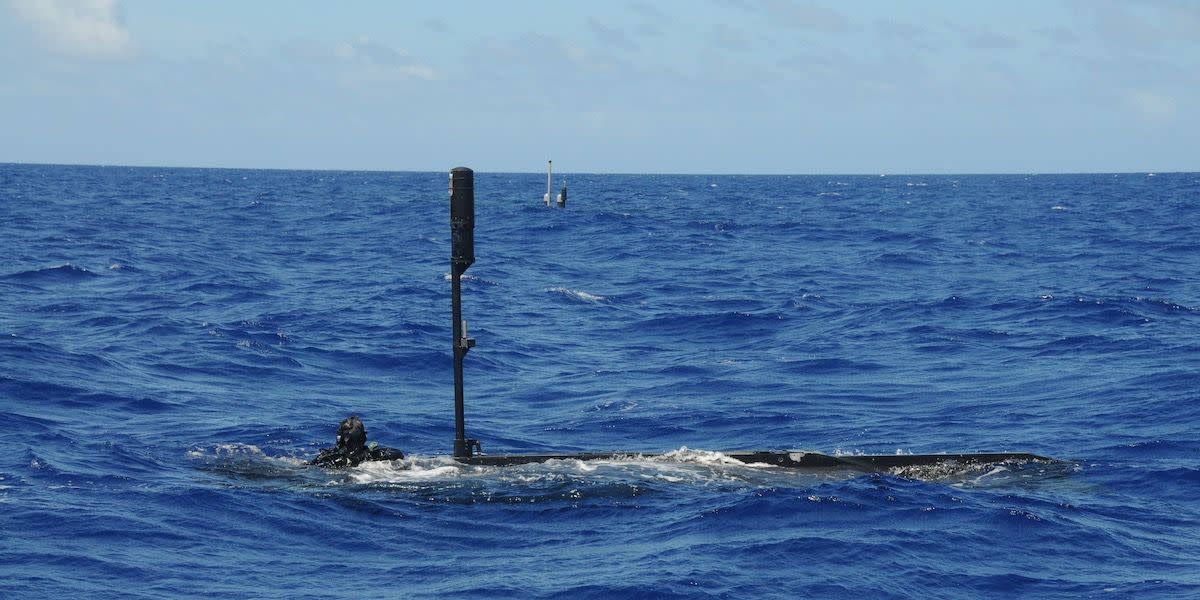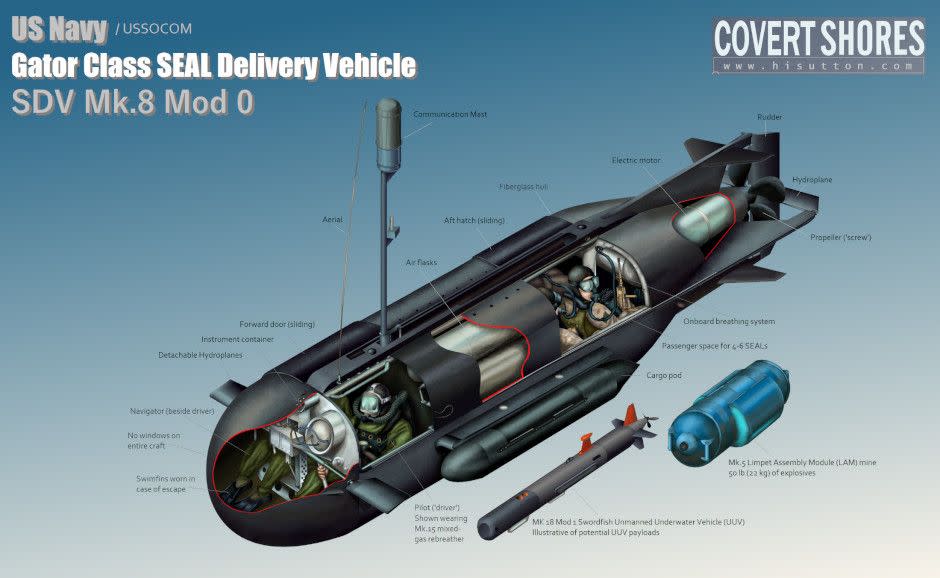This Mini-Sub Is Like a Commuter Bus for Navy SEAL Commandos

US Navy SEALs are trained to infiltrate enemy territory by sea, air, and land.
The Mark 8 SEAL Delivery Vehicle allows the Navy’s elite underwater commandos to travel undetected through enemy waters.
Up to eight SEALs and their mission equipment can ride on the little submersible.
U.S. Navy SEALs are trained to attack enemy coastlines and ships, wreaking havoc on targets both on land and afloat. SEALs typically disembark from nuclear attack submarines miles from their target, taking what’s called a Seal Delivery Vehicle to their destination. The SEAL Delivery Vehicle (SDV) Mk.8 Mod 0 is that ride, a small, low profile mini-sub that can transport a handful of SEALs to their destination.
The SEAL Delivery Vehicle (SDV) Mk.8 Mod 0, also known as the Mark 8 or “Gator Class,” was named after James “Gator” Parks, a retired SEAL and engineer who was a driving force in SDV development. SDVs allow SEALs (an acronym that stands for Sea, Air, Land) a sea-based option for infiltrating enemy territory. While simply crossing the border or parachuting in is not an option, SDVs allow SEALs to travel quietly through the green opaque waters of the sea, slipping right under the enemy’s nose.

The Gator SDVs are mini-submarines designed to carry six to eight SEALs commandos and their equipment. Two SEALs sit in front, the driver and navigator, with another four to six passengers in the rear. There are storage containers for mission gear located on both sides, and provisions to carry up to eight Mark.5 Limpet Assembly Module (LAM) mines. Limpet mines are small bombs designed to attach magnetically to a ship’s steel hull and blow a hole in it, damaging or sinking the ship.
The SDVs are strictly utilitarian, even lacking windows for seeing outside the submersible. The ride is best compared to a small car or airplane, with no room to stand, no room to lie down, and no bathroom. SEALs wear wet suits and rebreathers while riding in the Mk. 8, breathing the vehicle’s onboard oxygen supply as long as they are aboard to keep their own tanks topped off.
Unlike most submersibles, which use nuclear or diesel electric power, the SDVs use electric motors fed by onboard batteries for propulsion. The electric motor drives a single propeller, with the driver controlling the depth and direction of the boat via hydroplanes and rudders. The Mark 8’s slow speed, about six knots at the most, further reduces noise. All of this makes the little sub extremely quiet, allowing it to elude detection by passive sonar systems.
SEALs would use Gators for any number of sea-based missions. Departing from a nuclear attack or cruise missile submarine mothership, a small group of SEALs could motor to a stretch of enemy coastline and then stage a reconnaissance mission or raid inland. Alternately, they could slip through enemy defenses, park their SDV outside an enemy harbor, and then proceed one by one to plant limpet mines against the hulls of enemy ships.
The Mark 8 is used by the U.S. Navy and the U.K.’s naval commando force, the Special Boat Service. Introduced in the 1980s, the Gators have served throughout the Cold War and are in the process of being replaced by a new vessel, the Mk. 11.
Read more at Covert Shores.
You Might Also Like

 Yahoo News
Yahoo News 
